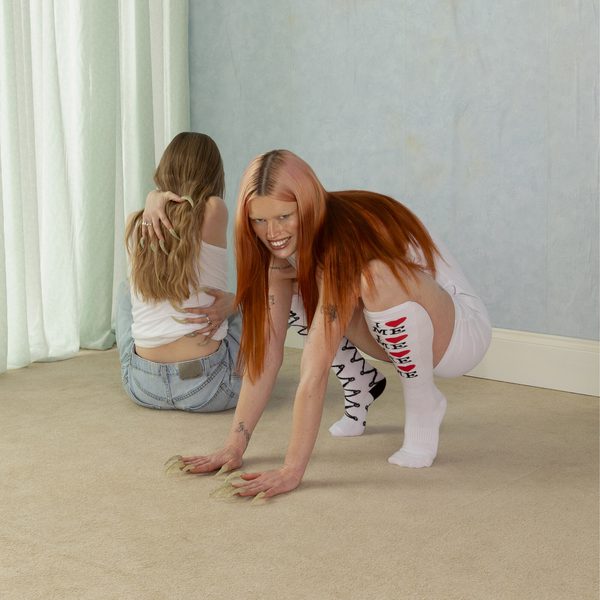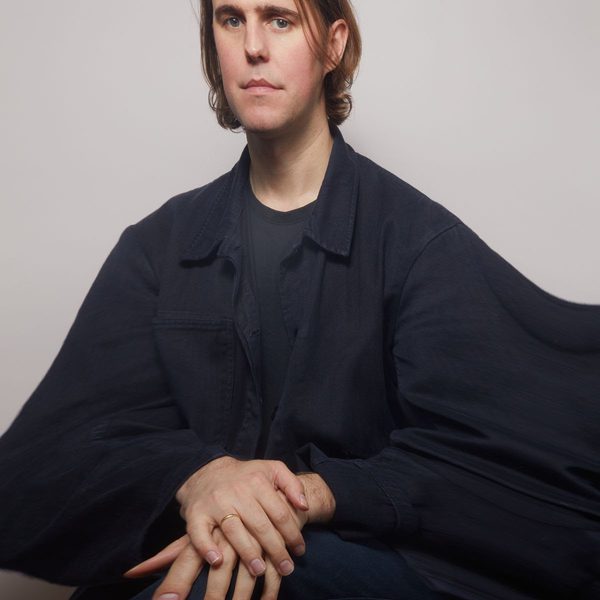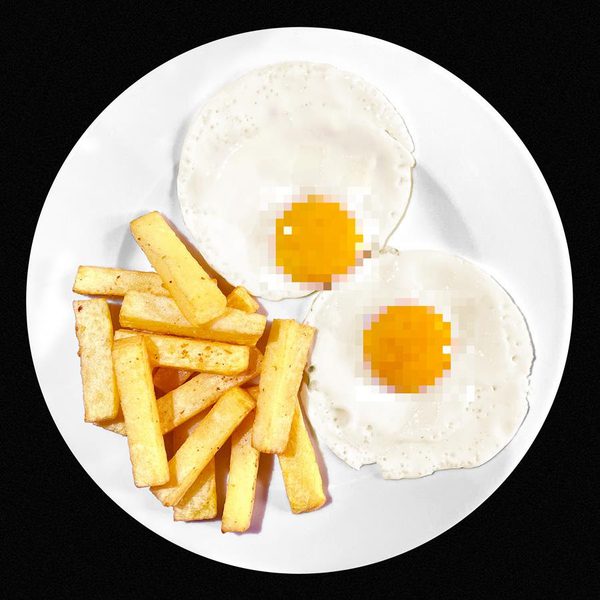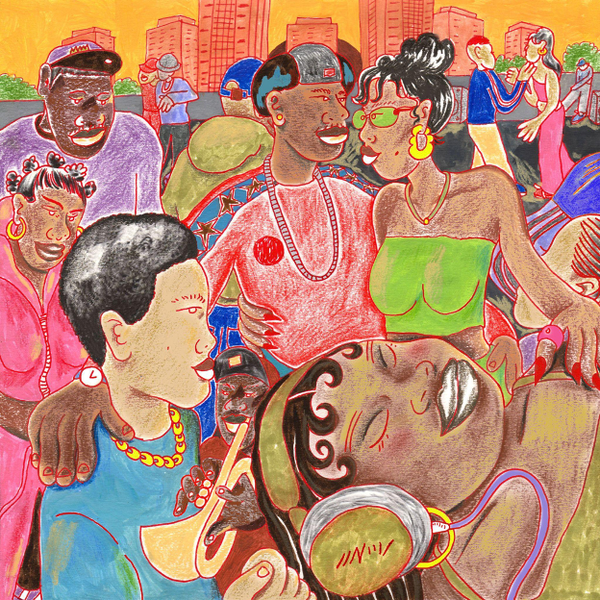
Jarvis Cocker's ordinary world
Jarvis Cocker continues to find inspiration from the every day but on his first record as JARV IS..., he's wrestling with the inevitability of change, he tells Grace Easton
When two friends, Willie Walters and Esme Young graduated from Saint Martins in the early 1970s, they couldn't find anything they wanted to wear. They decided to make their own clothes and open a shop; it stood on the corner of Royal College Street and Camden Road and they called it Swanky Modes.
“The thing about Swanky Modes,” Esme Young tells me, “was that it was four women and I don't think that had ever happened before. Normally what would happen is that the woman might be the designer but they'd have a man doing all the business.” The shop found a voice at the centre of Camden’s community of designers, artists and musicians.
“Swanky Modes” is also a song on Jarvis Cocker’s new JARV IS... record Beyond the Pale. It tells a story of a person who lived above the shop: “It was a very small flat, with a very narrow kitchen / No need for further explanation / You sat down on the work surface / I got down to work on your surface,” he sings. It’s full of Cocker signatures; it’s funny and sad and a bit sexy.
“Did Jarvis tell you why he wrote a song about Swanky Modes?” Young asks me. Well, I don't know if you've listened to the lyrics in the song? “Yeah I have, we were trying to find out who it was, but we don't know, we've no idea. I suspect he did make it up actually. He may have been in the shop because how could he have known about the kitchen… We've asked lots of people who worked for us and nobody has any idea so either they're lying or he made it up.”
The Camden Town the song is set in was London’s countercultural nucleus and a place of extraordinary grottiness. Cocker lived there in squat in his late twenties and is already a part of its musical mythology. The protagonist from Pulp’s “Sorted for E’s and Whizz” procured tickets to a rave from “a fucked up bloke in Camden Town”.
Once a haven for faintly anarchic crusties, drug dealers and people who lived on boats, Camden is now more of a tourist attraction than a cultural centre. The place, much like the character in “Swanky Modes”, has struggled to find a new identity in a city that is constantly changing.
Cocker was not the only musician drawn to Swanky Modes. Its glamorous and iconic designs were worn by the likes of Siouxsie Sioux, Cher and Grace Jones. “Well we knew The Clash, The Slits, Madness. Who else? Oh gosh, I can't remember,” Young tells me, “but you know we used to go and see bands three times a week… there were all those clubs like the Blitz and The Marquee club on Wardour Street.”
When Cocker arrived in London from Sheffield in 1988, the Acid House scene was just emerging. “I was lucky to go to some of those early raves,” he recounted in a 2017 interview. “You could buy tickets from somebody in a strange apartment block and then you had to go to, say, Soho Square at 11 at night and then get on a coach to some weird place beyond the M25. It was a massive revelation. It was what I always wanted going out to be like. There were lasers and smoke, and nobody was going to punch you (as was the case with going out in Sheffield).”
Part of the reason Cocker went to Saint Martins was to escape Sheffield. “That was the reason why I chose an art school in the centre of town,” he tells me when we talk a few months ahead of Beyond the Pale’s release. “At the time Saint Martins was on Long Acre, it’s a branch of GAP now.”

Cocker entered Saint Martins as a film student after submitting a couple of films he shot on a Super 8 camera he got at a jumble sale. “This was at a time when London wasn’t just shops,” he explains. “There were loads of little film production studios in Soho. We brought a lot to the area and the area brought a lot to us. We used to go through the bins and take their old film tapes and use them for our projects.”
“The criteria for who they had on the course was quite interesting - it was like a Noah's Ark. There were two northerners, me and this guy from Liverpool. There were two gay people, there were two Black people.
“You can think of that as some kind of token liberalism or right-on-ness, but it actually was really great because I'd been brought up in Sheffield and it's not a mono-culture but you knew what you were going to get. To come down to a different city and then have people from different backgrounds, different cities and with different ideas was just very stimulating.
“In any education there's the stuff that you've learned, coursework… whatever, but it also teaches you how to live a bit as well. In a way that's as important as the academic stuff. Just to be exposed to other ideas and other ways of living, and other ways of looking at things. It broadened my horizons considerably and so I was very grateful for that.”
Saint Martins has changed a lot since Cocker sang about it on Pulp’s Britpop anthem “Common People”. When the building moved to Granary Square in King’s Cross nine years ago, it became part of a £3 billion urban regeneration of one of London’s most impoverished areas. It sits amongst the offices of Google and The Guardian, with Facebook set to open its second office there next year.
My own experience at Saint Martins (sadly) did not not include raves off the M25; we were hyper focused and aware of our commercial marketability. “The trouble is now that when people are forking out so much money they feel like they've got to take it seriously,” suggests Cocker.
“It was a very interesting time to be at college because I was there just as it was on the turn. When I first started in 1988 you got a grant and you got some money towards your rent and stuff like that. In the last year tuition fees came in and they wouldn't pay any rent. I could feel the winds of change even back then, even at the start of the nineties. I tried to conduct a one-man protest by not paying my last year of tuition but they threatened to take me to court in 1994 so I eventually caved in and paid.”
"Human imagination is amazing - and in some ways it needs a kind of blank canvas to work on."
Swanky Modes’ founders also went on to teach fashion at Saint Martins. “Everything's so expensive in London now whereas when we were young we could open a shop,” Esme Young tells me. “I squatted, lots of creative people were squatting, in fact my brother was in a squat with Sid Vicious. If you were creative it was easy to be in London and be creative and have workshops and I don't think it is anymore. The shop isn't like it used to be, the shop was a place that you put your clothes in and sold them but now lots of stuff is online, and do you have the same kind of community when you're doing stuff online?”
Beyond the Pale was conceived and partly recorded in front of a live audience. “I’m really glad we did it in these small venues where you can see the whites of the eyes of the audience, where there was definitely no social distancing happening - in fact that was exactly the point that everyone was close together. I hope that we can go back to that. I think that we will be able to at some point. But it’s nice to have it as a reminder of what happened.”
The banality of domestic life is not a source of frustration for Cocker. When I first call him at his home just outside Derbyshire, his duvet cover has blown off the washing line. “Babe!” he calls to someone in the next room, “See, it’s already exciting!” he says, sounding pleased. Under lockdown, he’s managed to find a new way of connecting with an audience, performing live domestic discos, and reading bedtime stories over Instagram. He excitedly tells me he’s been recording Jarvis in the House for BBC 6 Music, taking listeners on a journey through his home: “We did one in the kitchen where we made the listener a cup of tea, then we did a sound bath... I think it’s just important to show that you can reframe this experience, so it’s not like a prison it’s its own interesting thing.
“Human imagination is amazing - and in some ways it needs a kind of blank canvas to work on. This kind of enforced pause has seen a bit of a surge in human creativity and I think the reason is for that because suddenly your imagination gets a jolt and comes back to life, whereas we haven't really had to use it in the last few years because we've had so many distractions we never need to bother with generating content for ourselves. It's all coming from outside.”
Cocker can summon boundless creative energy for the seemingly mundane. He writes down his dreams in case an interesting idea is revealed while he sleeps. “Well, I've always kind of enjoyed sleeping,” he laughs. “I think the impetus to start writing them down was that I read Graeme Greene had some kind of dream journal. I managed to track down a copy of that book and it was okay, but I was a little bit disappointed with it. I thought, well, maybe everybody's dreams are like that, they seem really enthralling when you're having them, but then if you were to see them written down in black and white they wouldn't seem so enthralling. So I thought the only way to find out is that whenever I remember one I'll write it down. I've been doing that for maybe the past four years or so.”
He reaches for his phone to tell me a dream: “I'm trying to see what the last one was - I don't date them so it's all just one long bit of text. I've got to check that it's not rude.”
He tells me he had a dream about bullfighting. “I’ve never been to a bullfight,” he explains, “but I was watching a bullfight on television and the commentator said that matadors stab at a certain place because there's a fat deposit there and if you stab into it the fat’s got some kind of poison in it and once it gets into the bulls bloodstream it dies of heart failure.
“That could almost be true, couldn't it? I don't know why I dreamt that. Sometimes what I dream of will be in some way related to what's happened to me in the day but not always. Here's a good one: I was in the studio and Leonard Nimoy was the producer. Isn't that good!”
"I think memoir is something that people come to at the end of their life and they try to reframe all their experiences so that they have significance."
Between dreams and discos Cocker has been writing a book about creativity; This Book Is A Song is scheduled to publish in the autumn. “My friend is this literary agent; I just sort of knew her and I liked her so I said, ‘yeah of course you can represent me,’ and then she ended up getting me a book deal so I had to kind of do it.
“I wish I could tell you that I’d finished the book - when lockdown happened I thought to myself, ‘now this is when the book will get done!’ but it’s not finished yet.”
The central conceit of This Book Is A Song sees Cocker take the reader through the process of writing a song, partly inspired by his infamous Powerpoint presentations and the eclectic objects he’s collected over the years. “I’ve kept a lot of things” he tells me, “the piece of paper I gave to John Peel. Some Wrigley’s Extra chewing gum - before it turned into the kind of pellets that you get now. Imperial Leather soap, the one with the sticker in the middle, I’ve kept it because I knew I would never see it again. A Marmite jar with the old metal lid before it changed to plastic.
“It’s a bit like that woman Marie Kondo - a kind of archaeological dig of my life.”
These objects offer windows into other times and places, without the messy business of trying to define oneself in relation to the past: “I think memoir is something that people come to at the end of their life and they try to reframe all their experiences so that they have significance, or so that they fall into the meaning that they are trying to convey in the memoir.” He tells me.
So why has Jarvis Cocker got an old Marmite jar in the attic? “Marmite is something that I've always liked to eat, but the time when I realised that maybe I had a problem with this was when Rosa's Lime Juice Cordial changed its bottle and label. That wasn't something that I ever generally drank, it's kind of horrible. But I really liked the bottle so I went and bought a it when I heard it was getting changed and then it just stayed in the cupboard for years. And I just thought why did you do that? It's horrible, it gives you a stomach ache.
“All I can say is that it must be something to do with a dislike of change and some attempt to hold onto things or wanting things to stay stable... Sometimes people say that if you're from a home background where a parent has gone there can be that kind of thing - often people who have had that experience can turn into hoarders. It's like they want to control the situation or keep it the same if they've been through something where something that they take for stability has turned out not to be stable.”

While he might hold on to old Marmite jars, Cocker is not an artist afraid to embrace change. Unlike the characters he writes about in “Swanky Modes”, Beyond the Pale reveals an artist more interested in the future rather than reframing the past.
“I'm just curious,” he says. “That's what I get pleasure from: discovering new things and trying to find out how things work. I always try and keep a forward momentum in that... I remember somebody saying that you should try and learn one new thing every day. I think that's a really good ambition, to always be looking to broaden your horizons, rather than saying, ‘okay I'm content with what I have or this is it.’ I'm always interested in making new discoveries, but I like to know that things are going to be where I've left them.
“I suppose that's part of the thing. It seems like that's the foundation; if you want to keep building then the foundation has to be solid. Otherwise you could build something and then it stops.”
Get the Best Fit take on the week in music direct to your inbox every Friday

Wet Leg
moisturizer

MF Tomlinson
Die To Wake Up From A Dream

BIG SPECIAL
National Average





